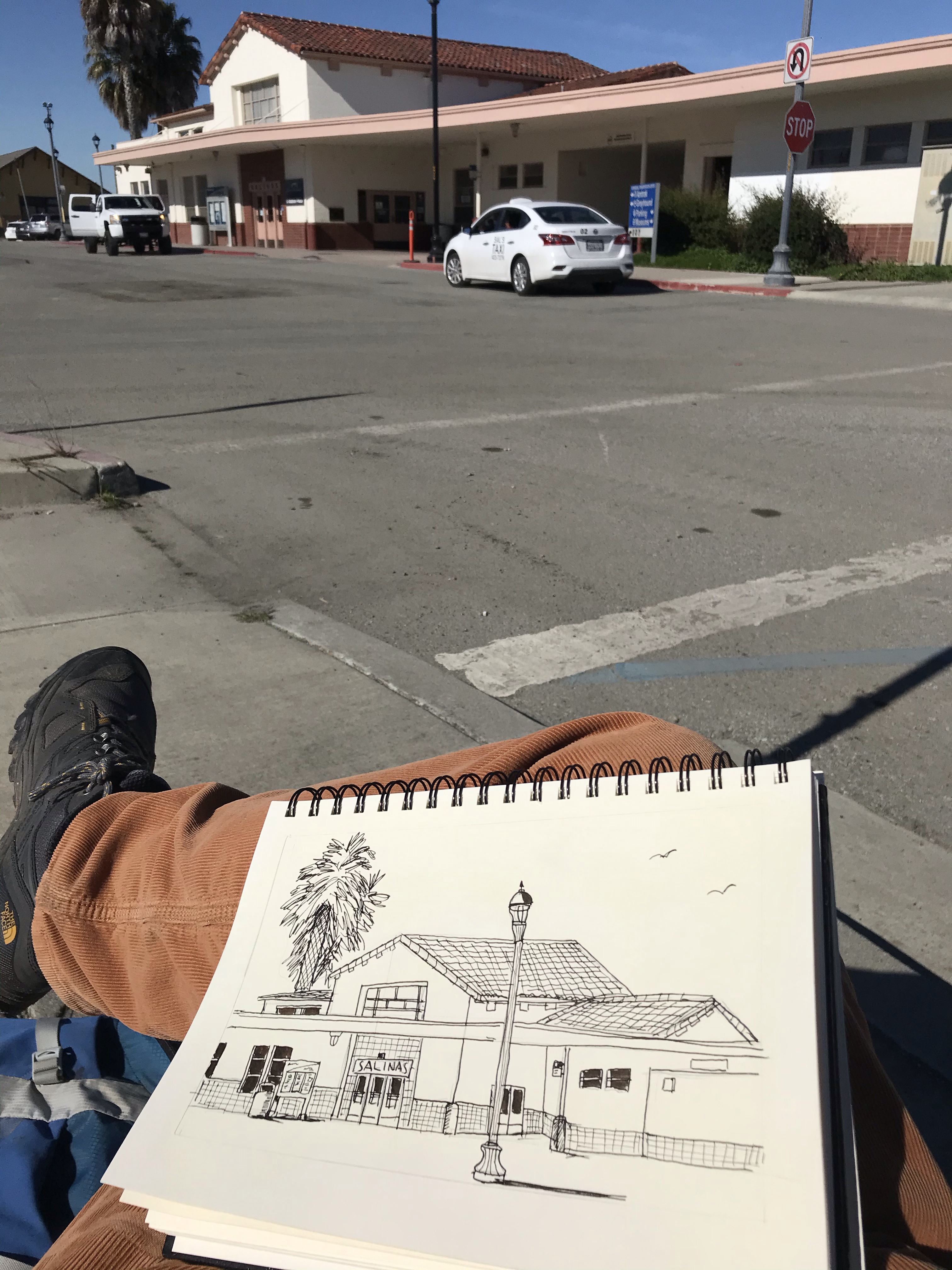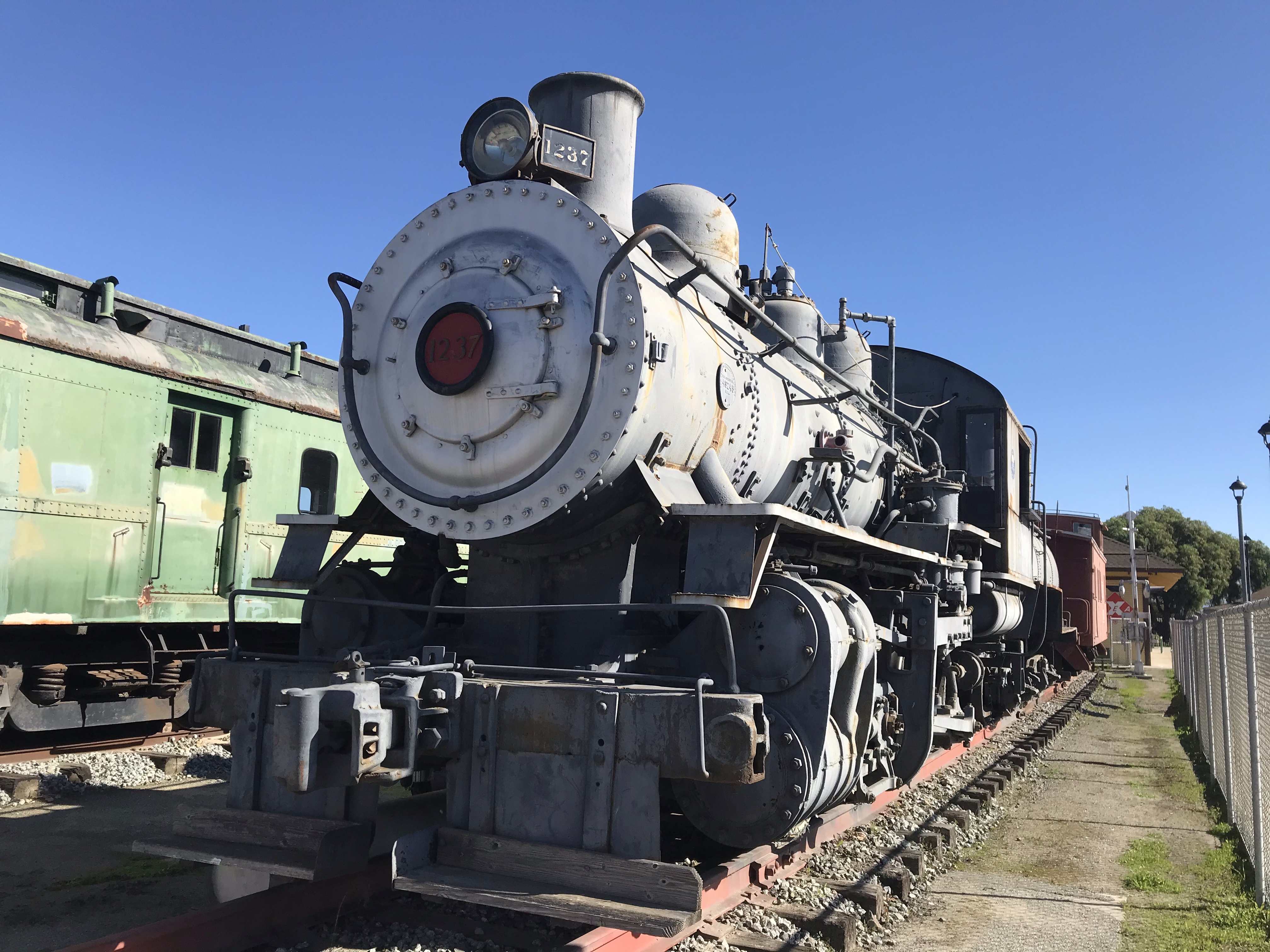“There isn’t a train I wouldn’t take, no matter where it’s going.” Edna St. Vincent Millay, 1921
In 1971, when Amtrak was created as a national passenger network, the Coast Daylight was one of the few Southern Pacific routes that was retained in the new era of American rail.
The Coast Starlight really earns its name, just as the Coast Daylight did, between the stops of Santa Barbara and San Luis Obispo. The route runs on the coastal line between Los Angeles and San Jose giving passengers outstanding view of the Pacific Ocean. It’s only fitting that the cover of the ninth edition of USA by Rail by John Pitt features an aerial photograph of Coast Starlight, Number 14, snaking along the coast between Santa Barbara and SLO.

The Coast Starlight provides service between Los Angeles and Seattle, a distance of 1,377 miles. It takes the train 34 hours and 50 minutes to complete the journey. While the General Electric P42DC locomotives are capable of speeds of 100 miles an hour, the average speed of the Coast Starlight is 40 mph.
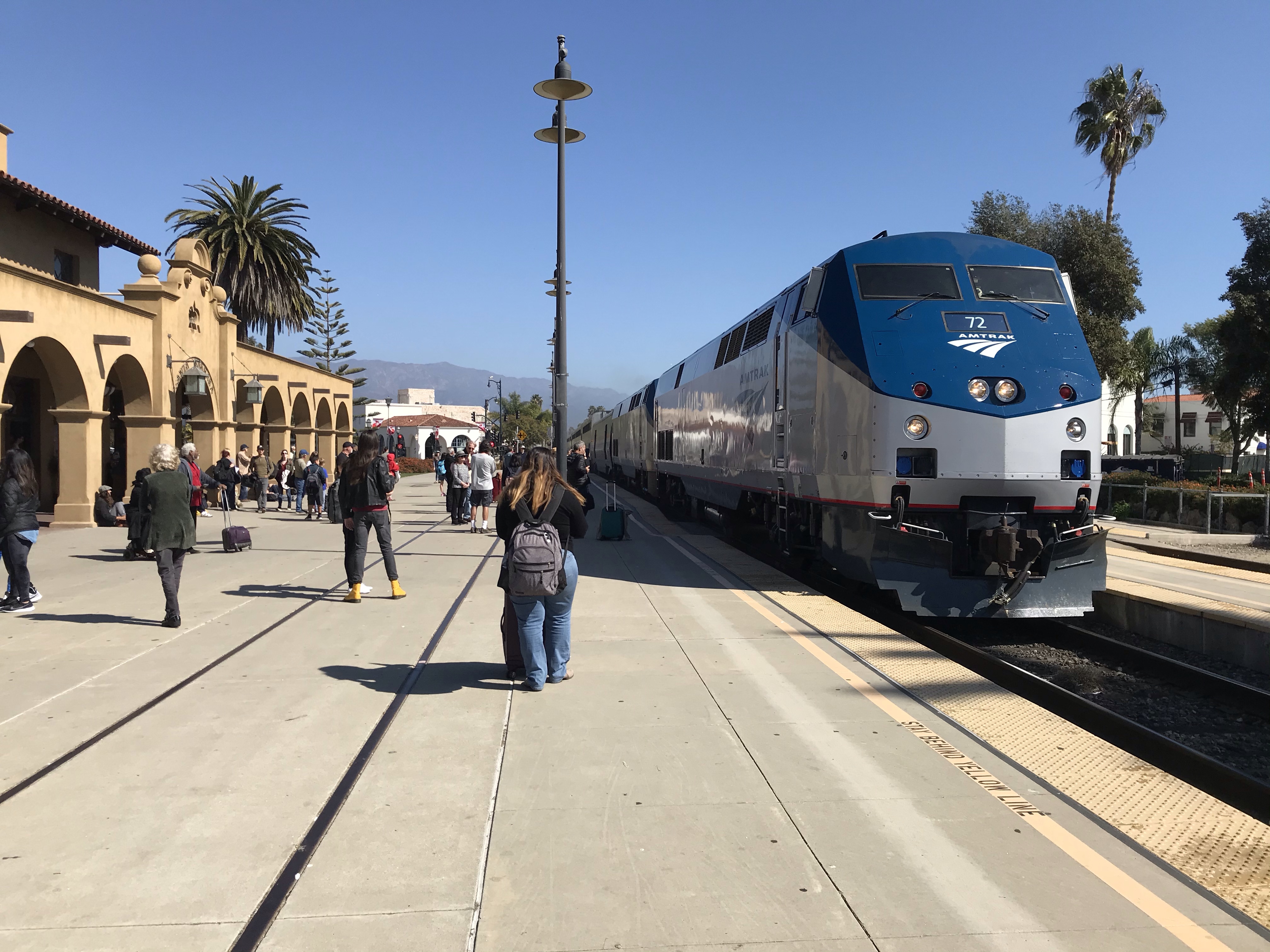
The coach passengers lined up and the conductor scanned our tickets. The car attendant assigned us a seat. I climbed aboard and found my seat on the second story on the Eastside of the train. In other words: the side without ocean views. I was not going to spend much time in my assigned seat because I headed over to the lounge car, got a beverage, and found a seat in the observation car. This car is lined with large picture windows and skylights that gives the rider outstanding views.
I started a sketch in my smaller Stillman & Birn Delta Series spiral sketch book. When you are on the top story of the train, things can get a little bit shaky so fine details and crosshatching were out. Instead I opted for a Micron Pigma sepia brush pen. Using this sketching tool helped me to keep things loose and expressive.

Part of the joy of train travel is the people you meet on your journey, albeit a very short journey, I met a travel writer and fellow birder in the observation car. We birded the beautiful coastal afternoon (harriers, red-tails, and turkey vultures) and talked about our travels and writing and sketching. You certainly would never have this experience driving the coastal route in a car.
The Starlight pulled into San Luis Obispo Station on time where the train stopped for about 15 minutes while passengers unloaded and loaded and the station agent divested the cars of trash and helped to load luggage.
A retort from the engine signaled that the Coast Starlight was leaving. The platform was now emptied of passengers stretching their legs or having a smoke and all the doors were closed. The train slowly pulled out of the station toward the toughest climb on the Coast Line, crossing Stenner Creek on the trestle, curving around to the right on the Horseshoe Curve toward the summit of Cuesta Grade and eventually, to Seattle, Washington.

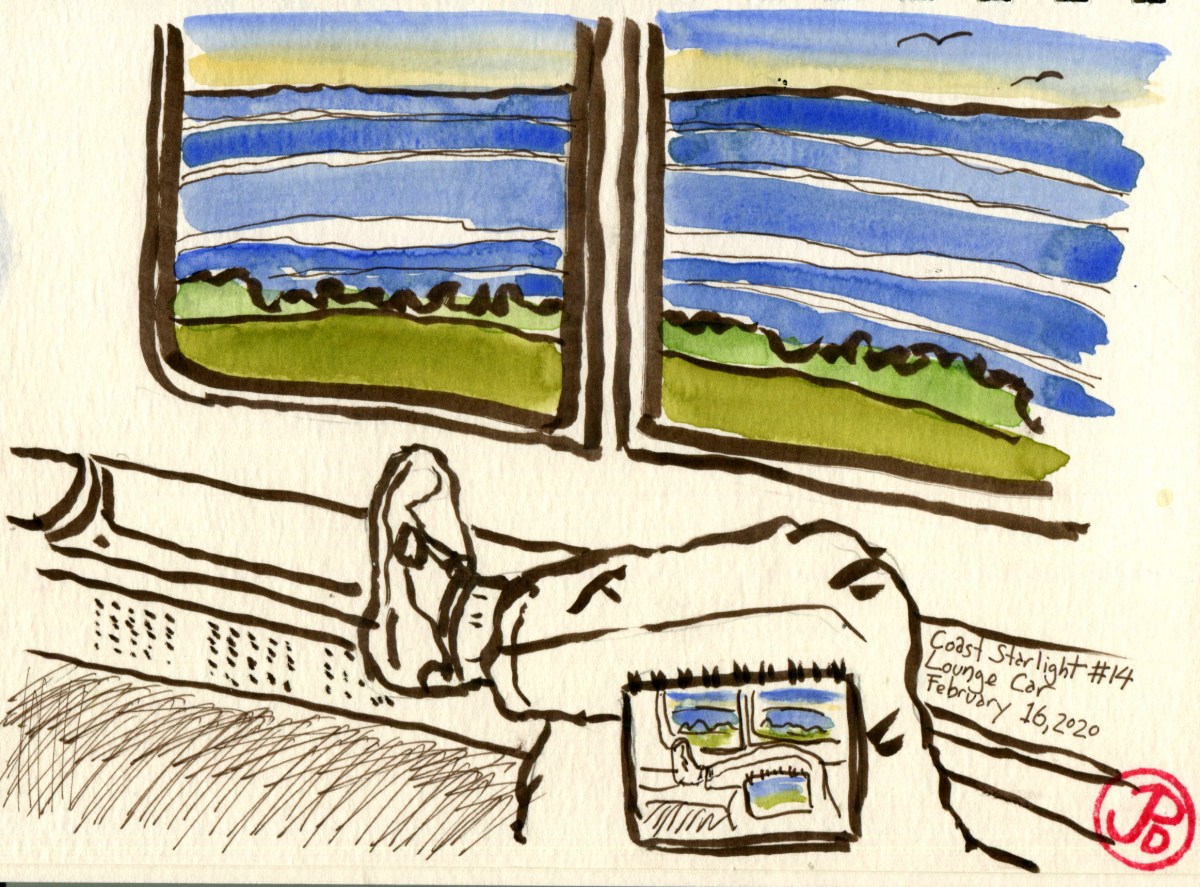

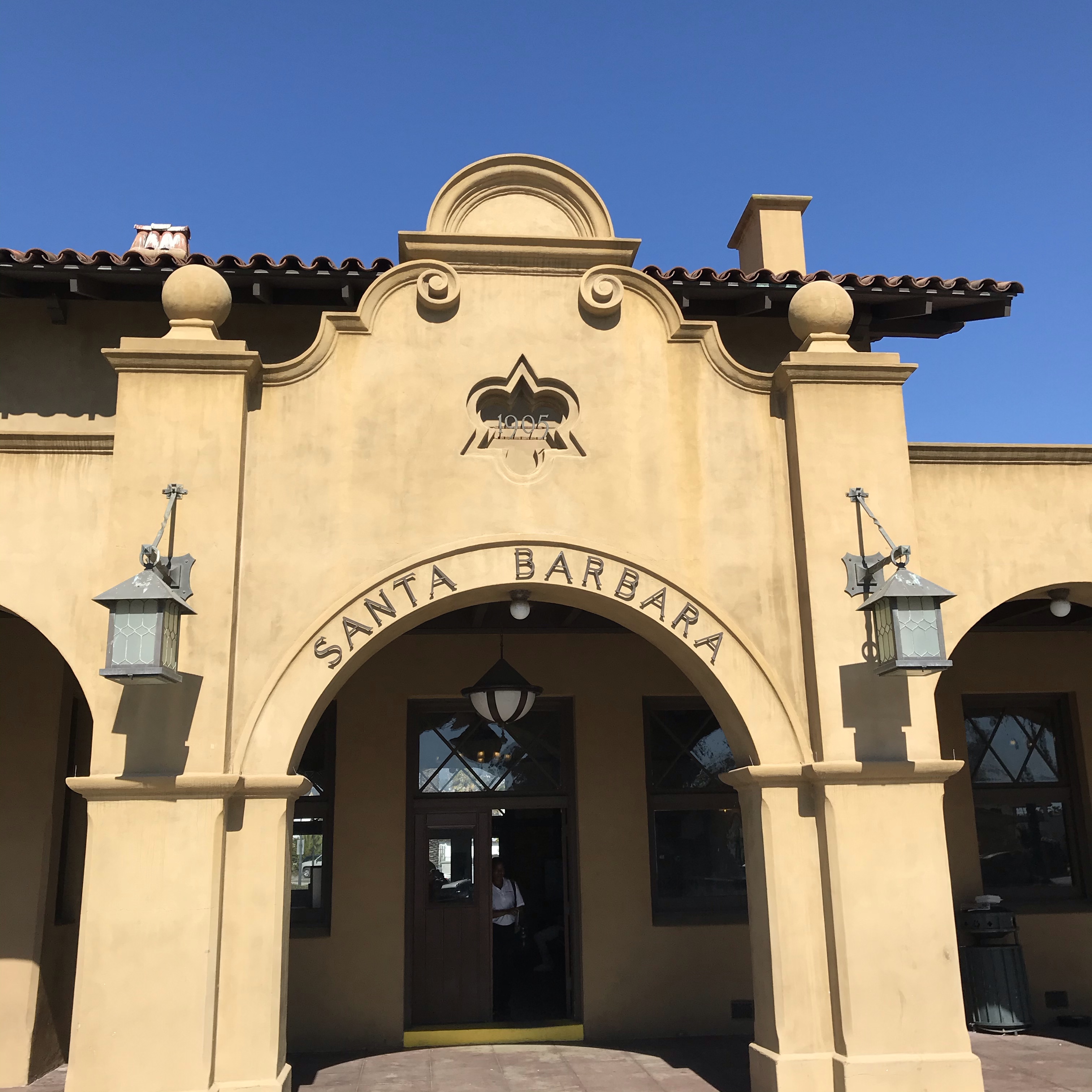

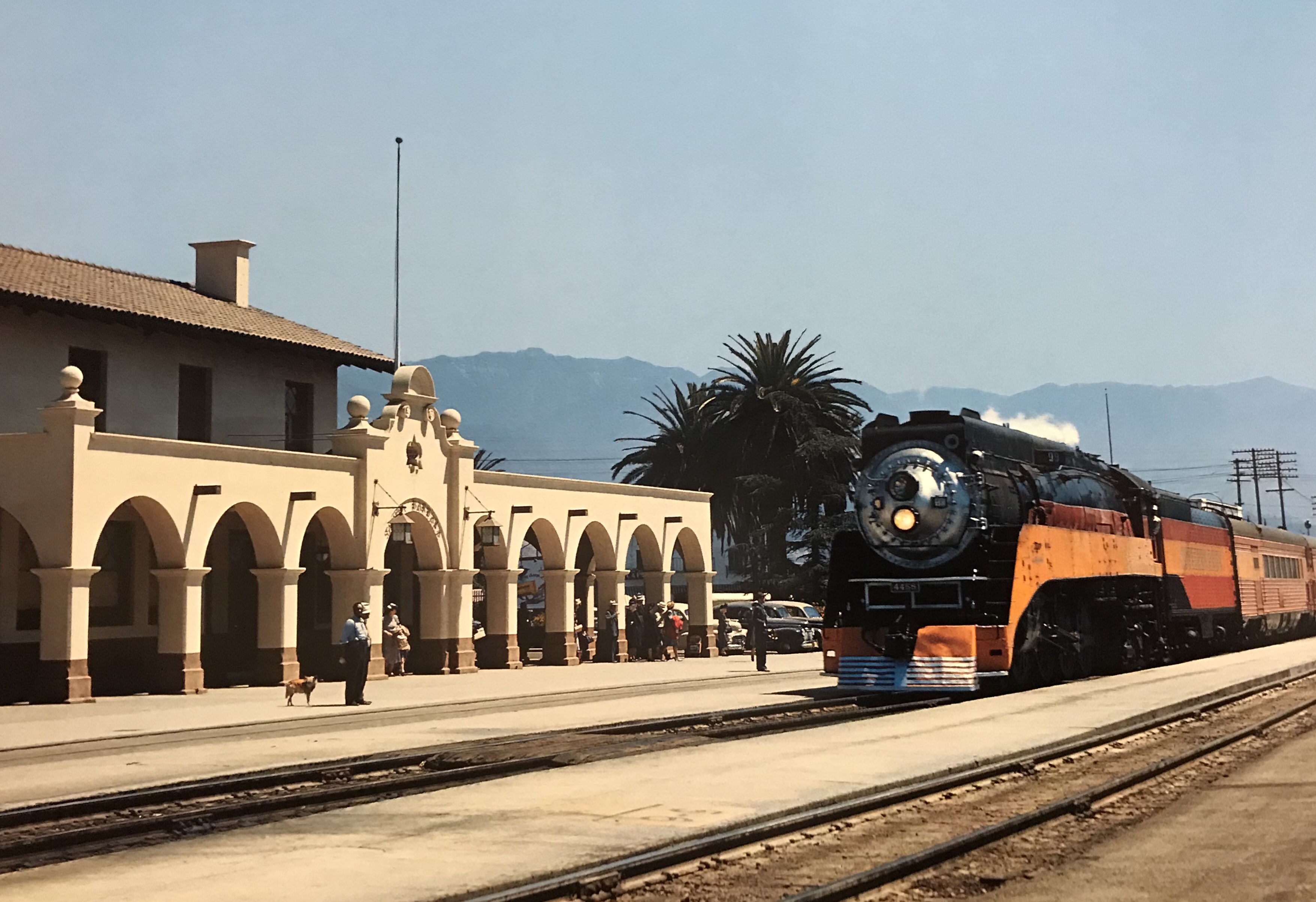


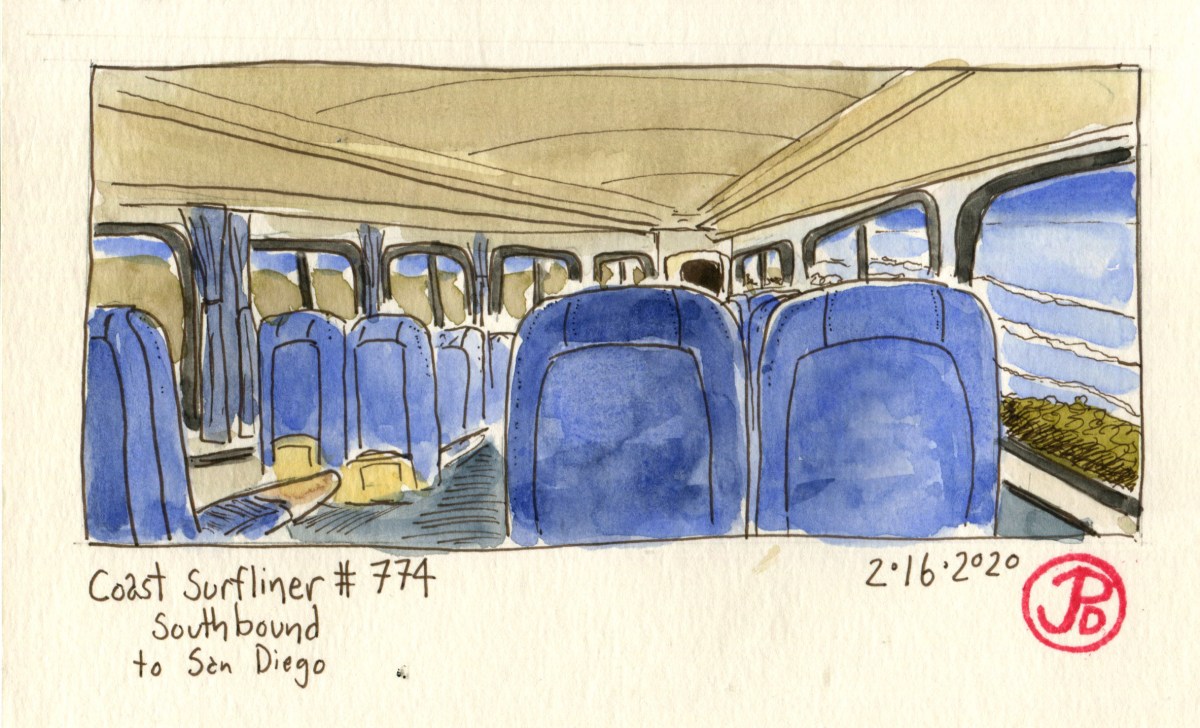
 The Coast Surfliner pulling into San Luis Obispo Station for its 6:55 AM departure. SLO is the northern most stop on the Surfliner.
The Coast Surfliner pulling into San Luis Obispo Station for its 6:55 AM departure. SLO is the northern most stop on the Surfliner.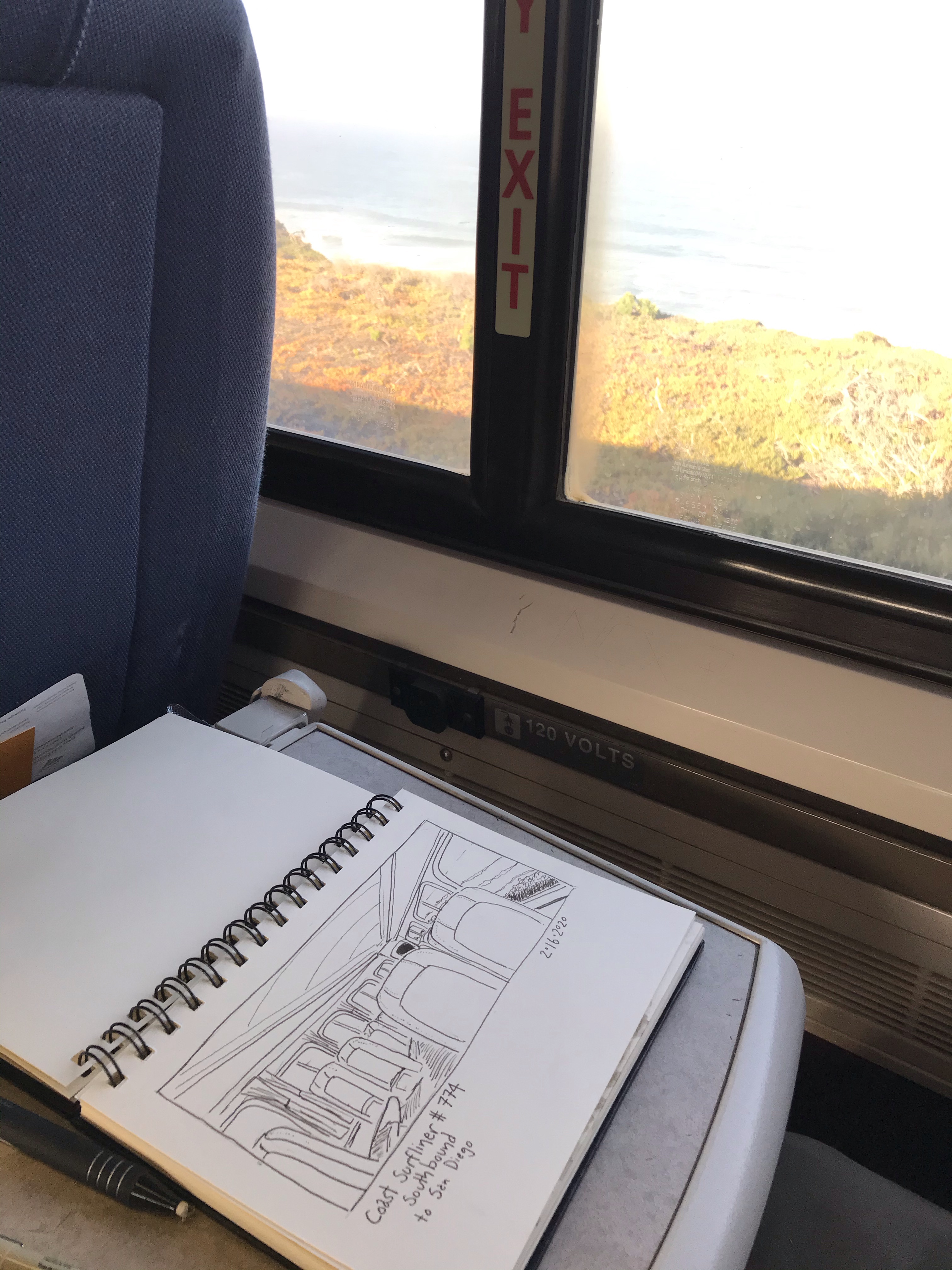
 Pelagic birding from the second story of the Coast Surfliner.
Pelagic birding from the second story of the Coast Surfliner.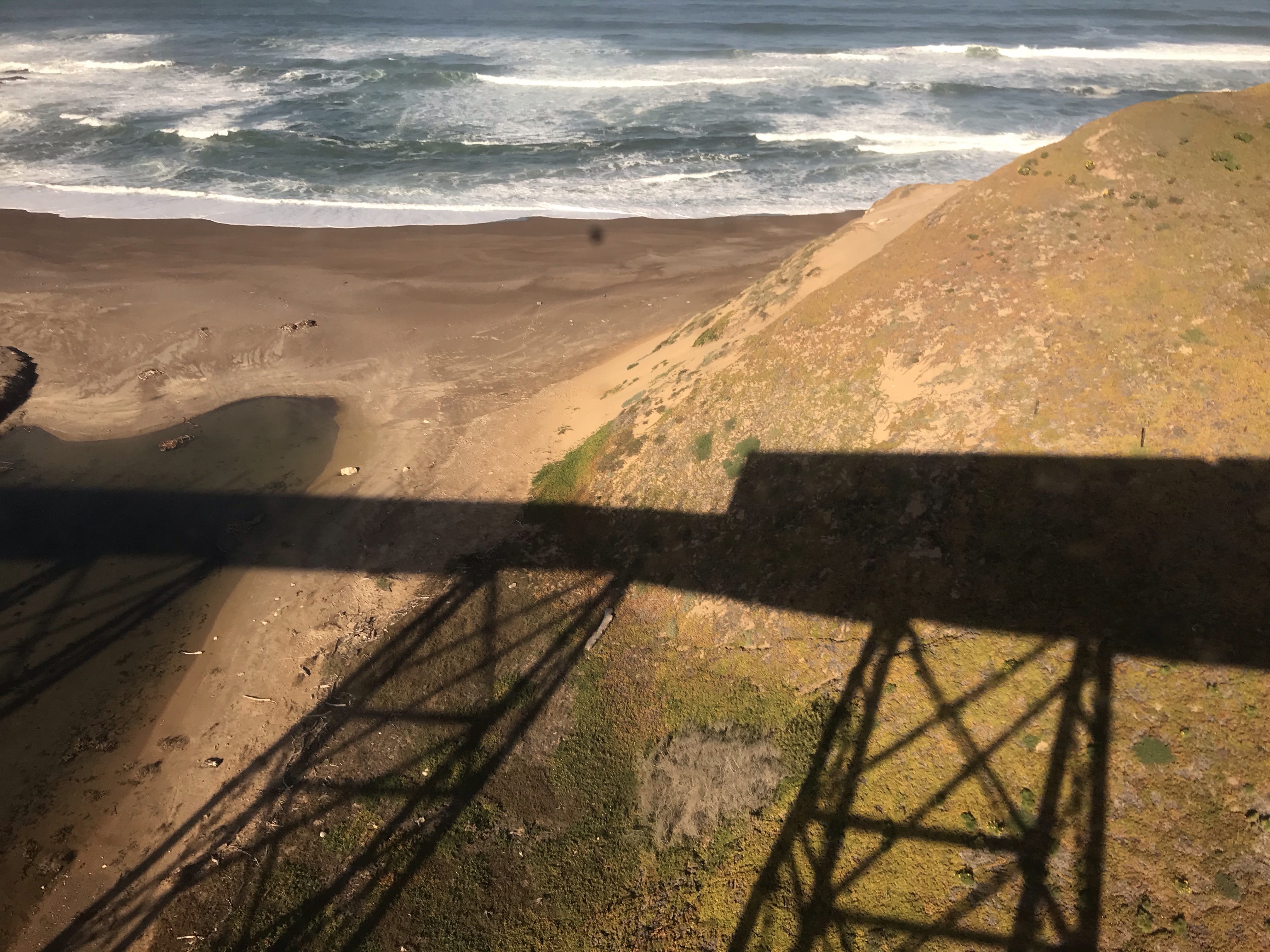
 The Coast Surfliner being pushed to San Diego as it leaves Santa Barbara Station running one hour late. Overall a wonderful ride, except for the breaking down part. Now it’s time to sketch!
The Coast Surfliner being pushed to San Diego as it leaves Santa Barbara Station running one hour late. Overall a wonderful ride, except for the breaking down part. Now it’s time to sketch!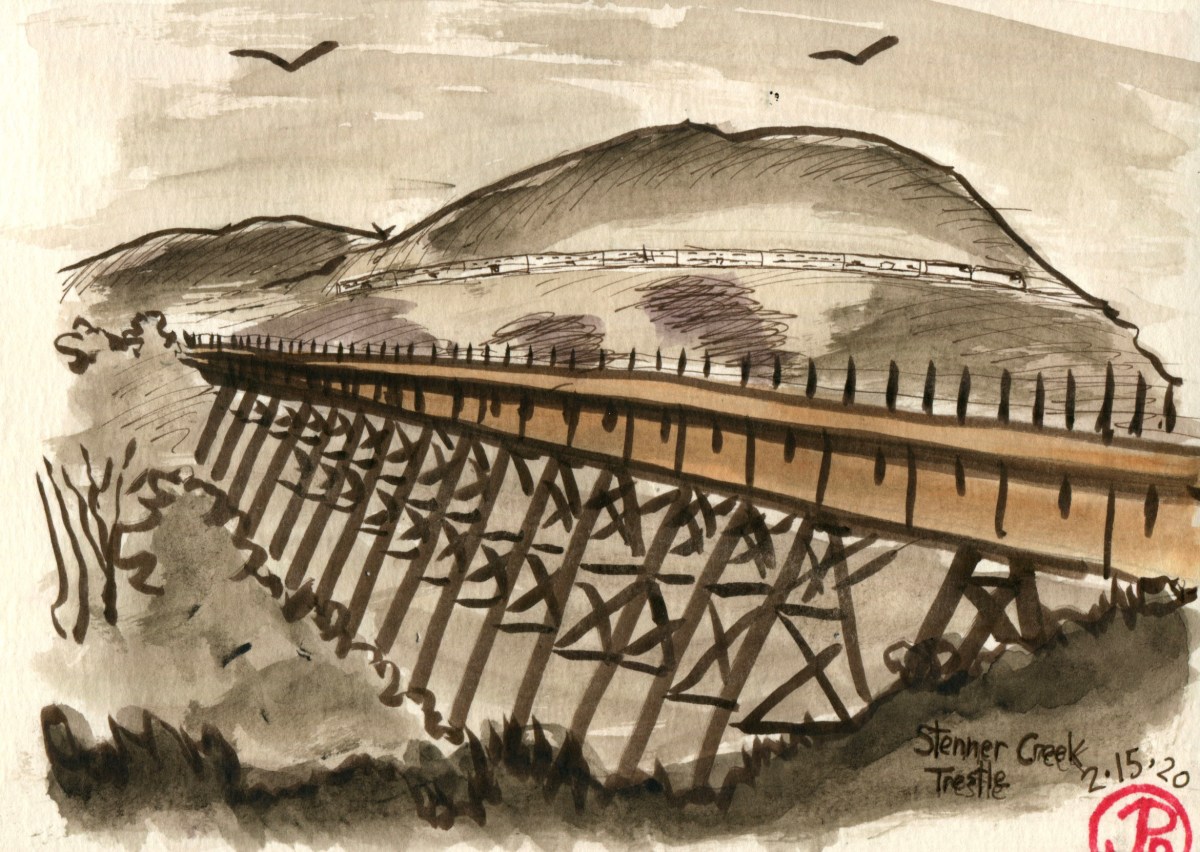
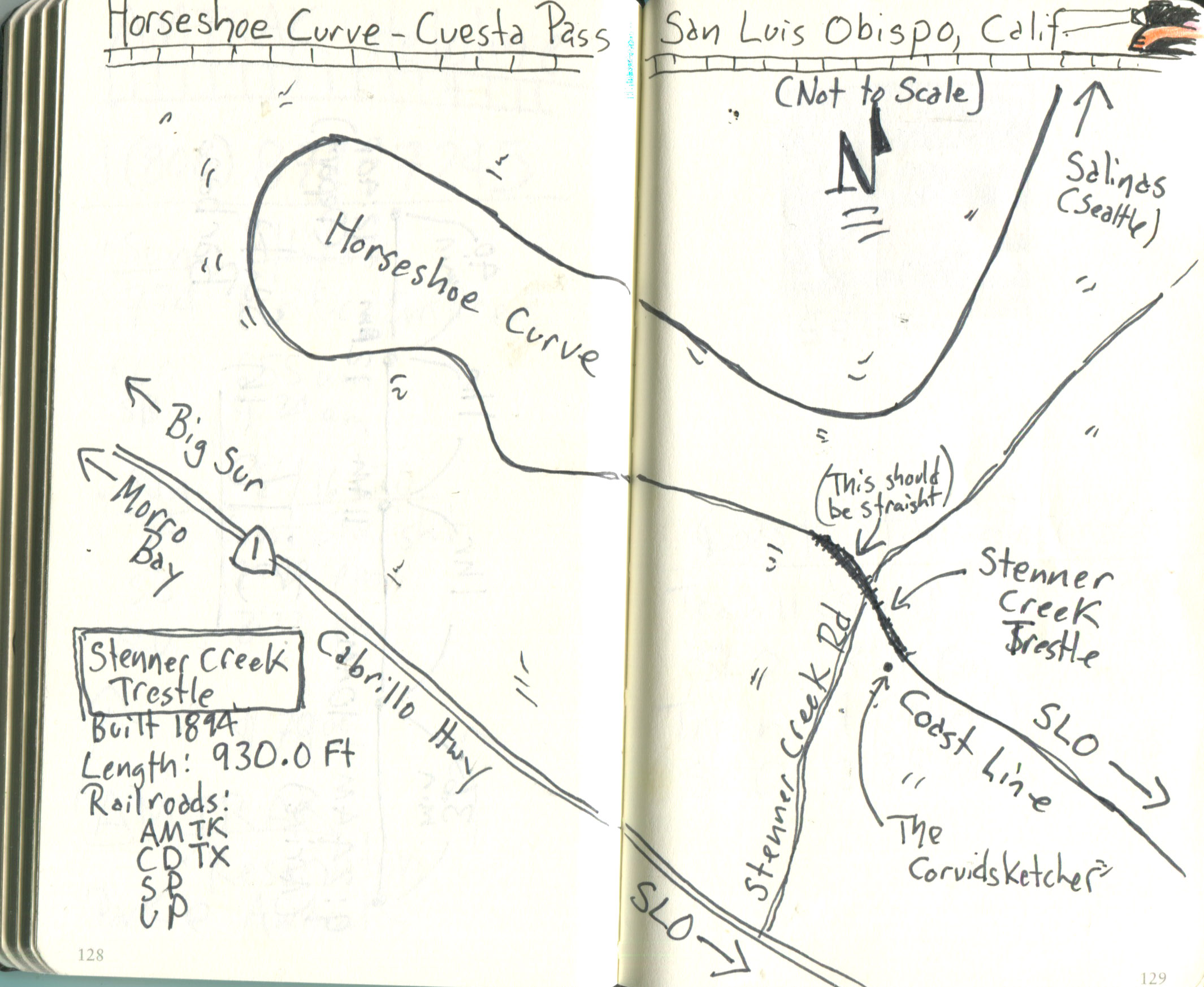
 A southbound Coast Starlight, train number 11, with an eight car consist crosses the Stenner Creek Trestle, 80 feet over Stenner Creek. This AMTRAK passenger train started its journey in Seattle at 9:00 AM the previous day and was running about ten minutes late.
A southbound Coast Starlight, train number 11, with an eight car consist crosses the Stenner Creek Trestle, 80 feet over Stenner Creek. This AMTRAK passenger train started its journey in Seattle at 9:00 AM the previous day and was running about ten minutes late. An archival photograph taken in 1939, from roughly the same spot, of a Coast Daylight with a helper coming down from Cuesta Grade and crossing Stenner Creek Trestle. The scene after 70 year remains the same, except for the difference in motive power. (Union Pacific Museum Collection: SP photos)
An archival photograph taken in 1939, from roughly the same spot, of a Coast Daylight with a helper coming down from Cuesta Grade and crossing Stenner Creek Trestle. The scene after 70 year remains the same, except for the difference in motive power. (Union Pacific Museum Collection: SP photos) A Seattle-bound Coast Starlight enters the timeless trestle. I would be on the same Coast Starlight the following day. Read more about it in another post.
A Seattle-bound Coast Starlight enters the timeless trestle. I would be on the same Coast Starlight the following day. Read more about it in another post.
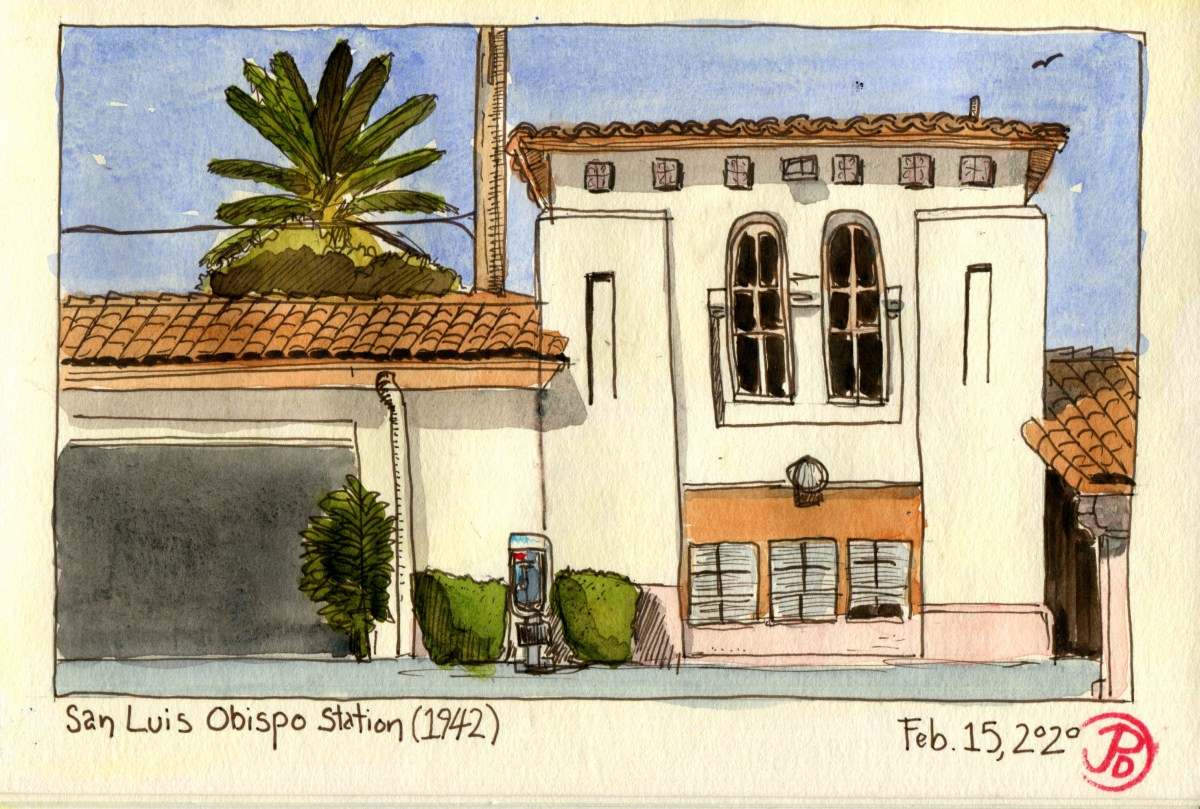
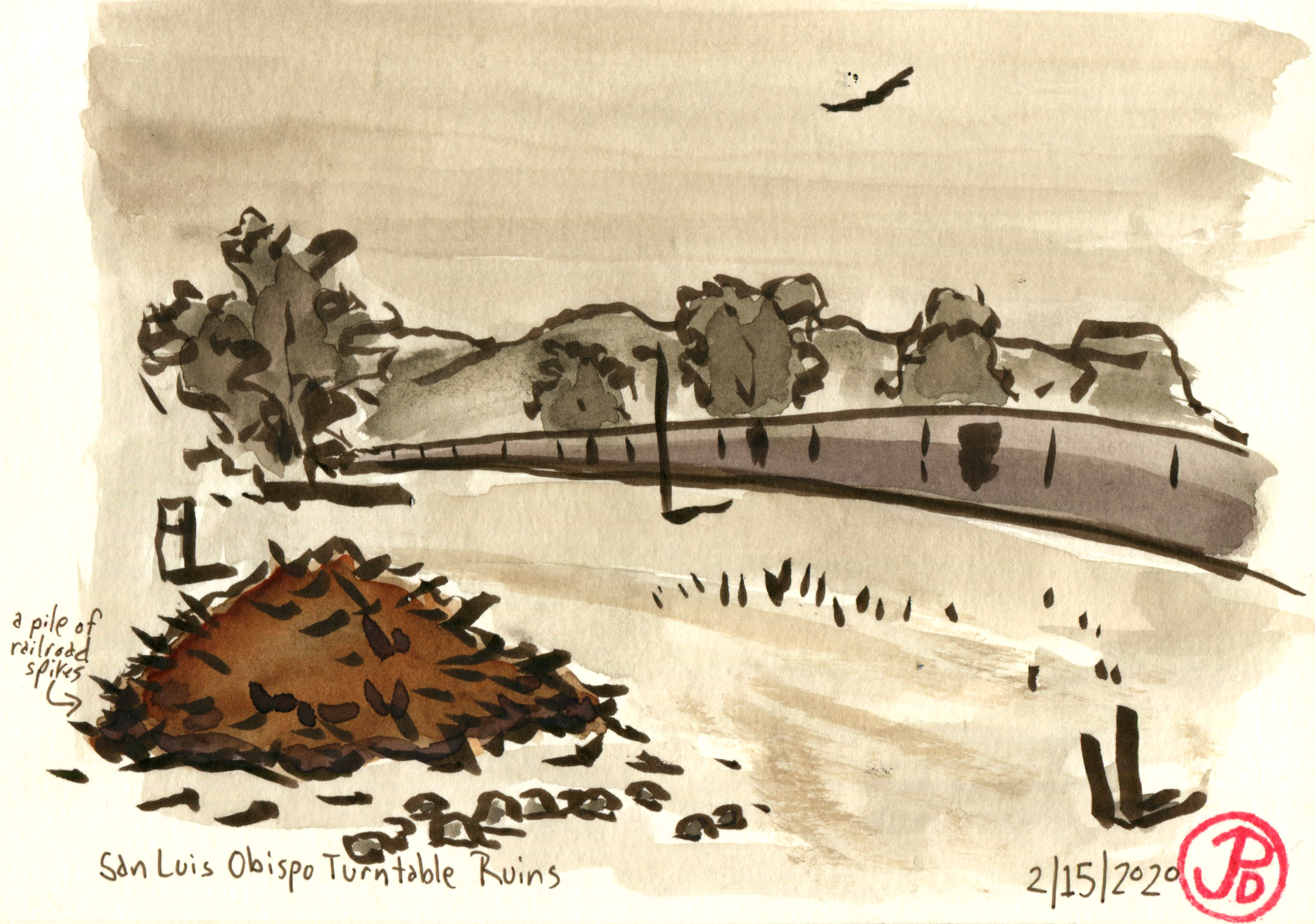
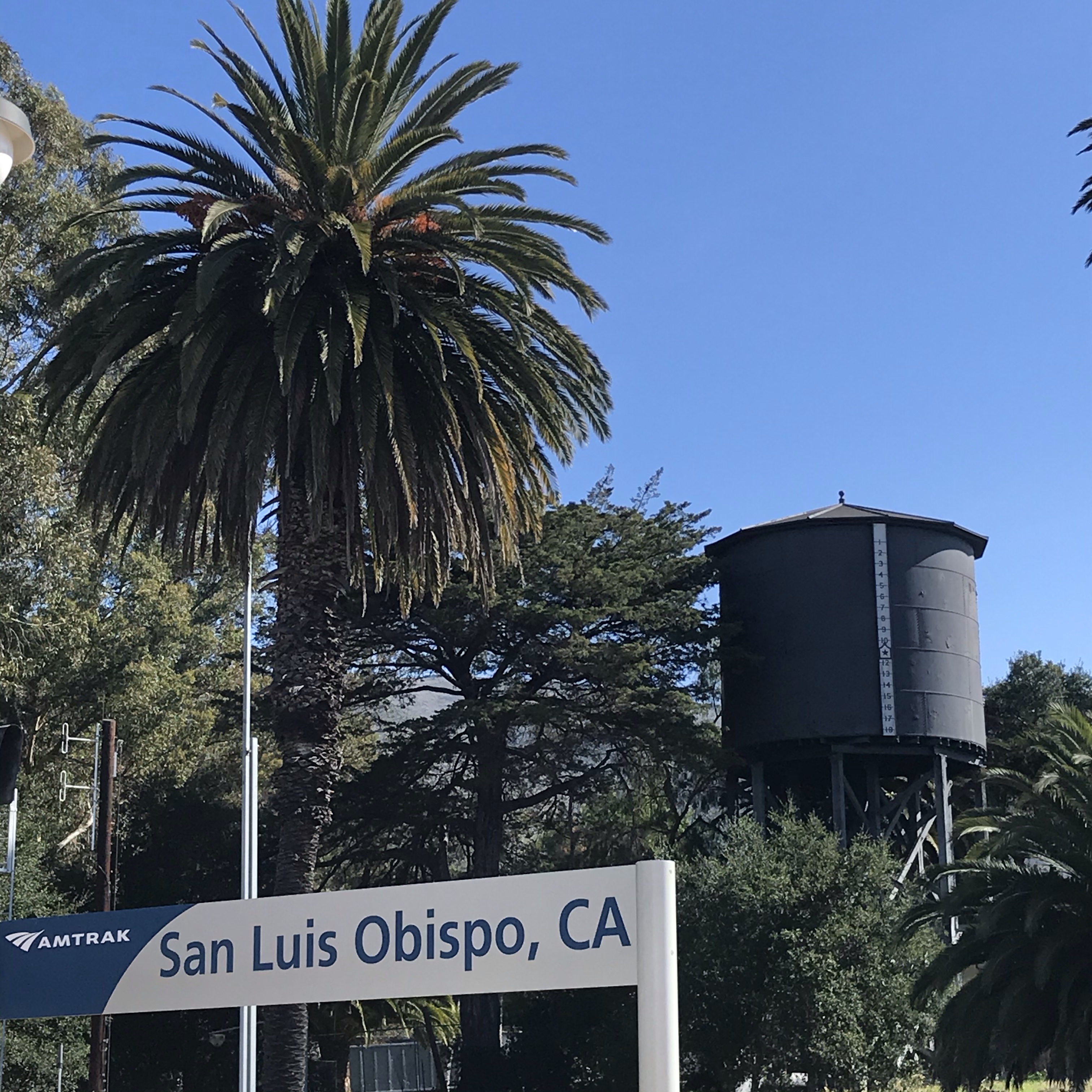

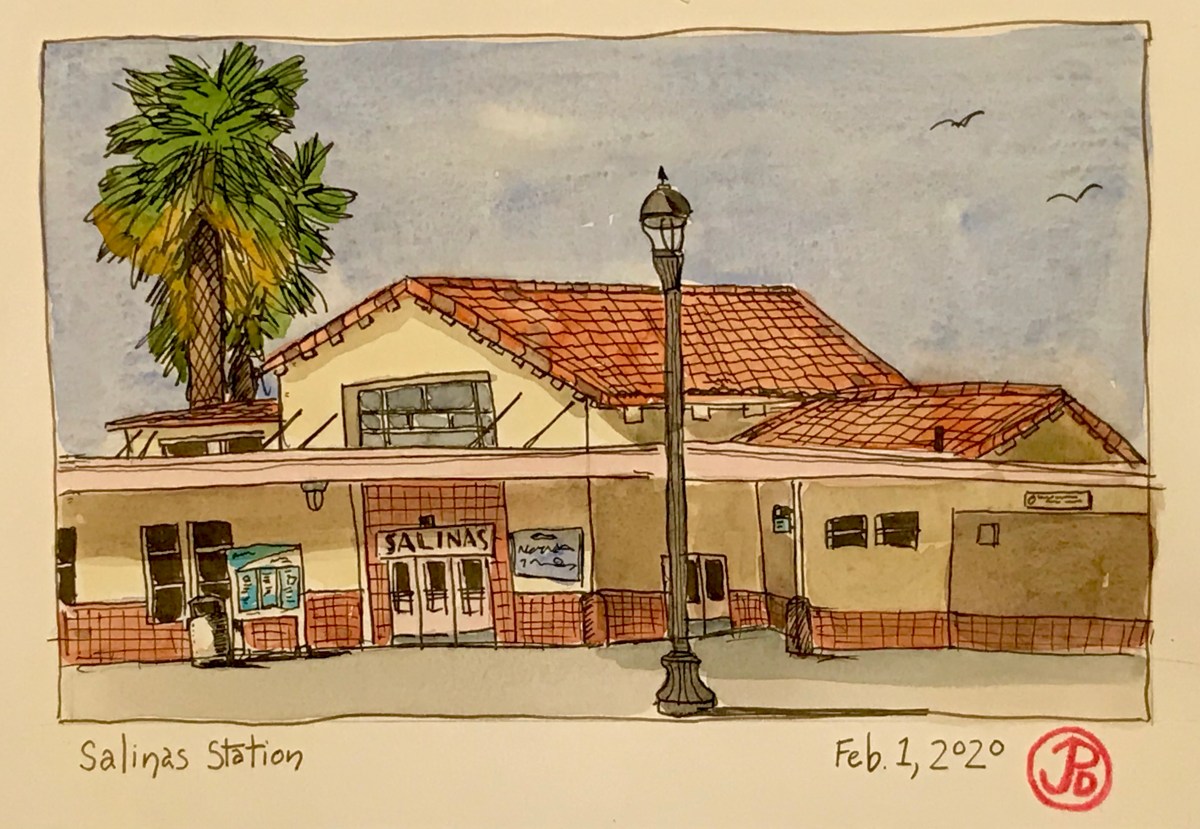
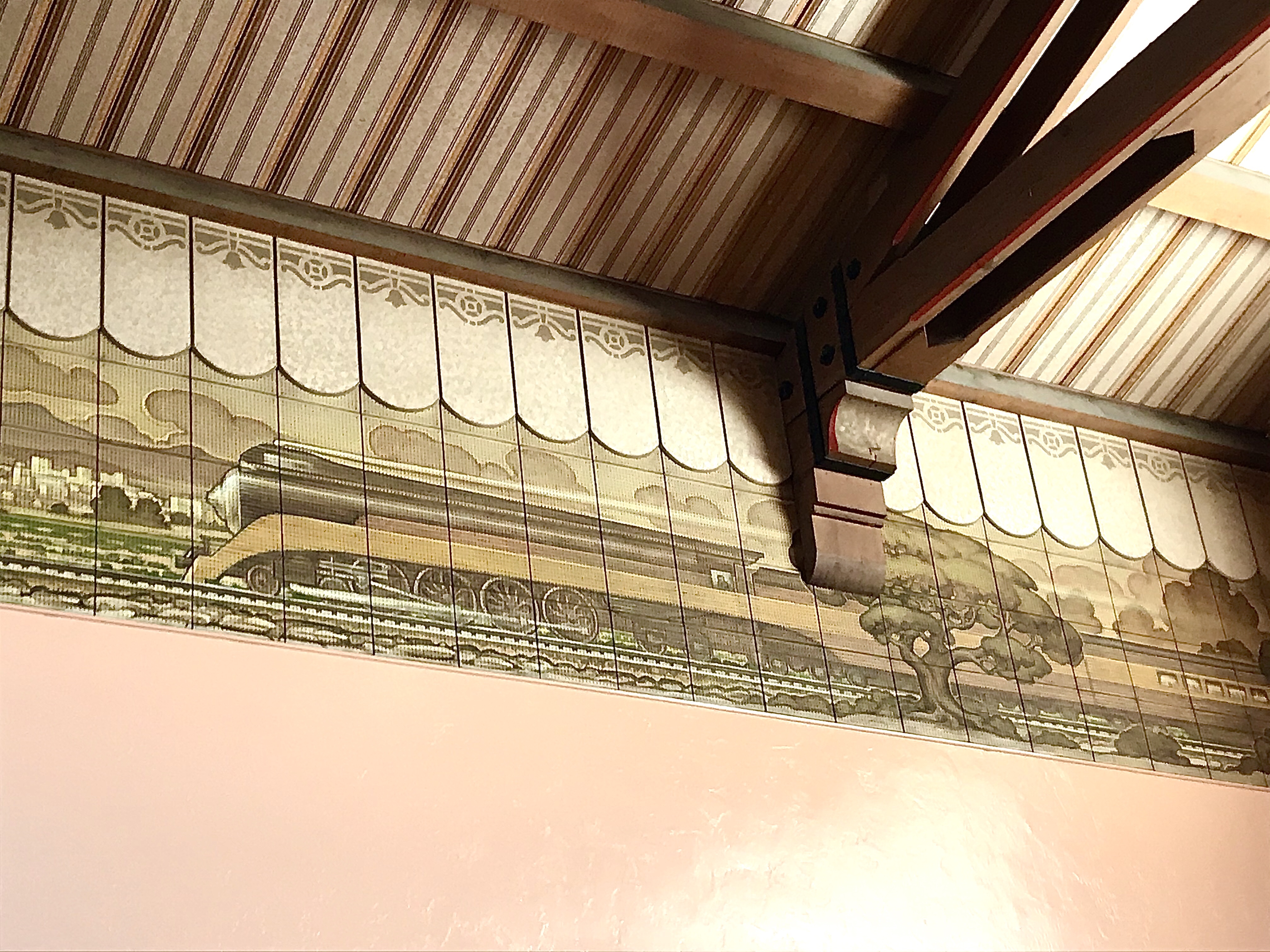 The John MacQuarrie mural at Salinas was painted in 1941 (the same year as the Palo Alto mural) and prominently features the star motive power at the time, the Golden State 2 (GS-2). Six of these locomotives were built and went into service in 1937.
The John MacQuarrie mural at Salinas was painted in 1941 (the same year as the Palo Alto mural) and prominently features the star motive power at the time, the Golden State 2 (GS-2). Six of these locomotives were built and went into service in 1937.
